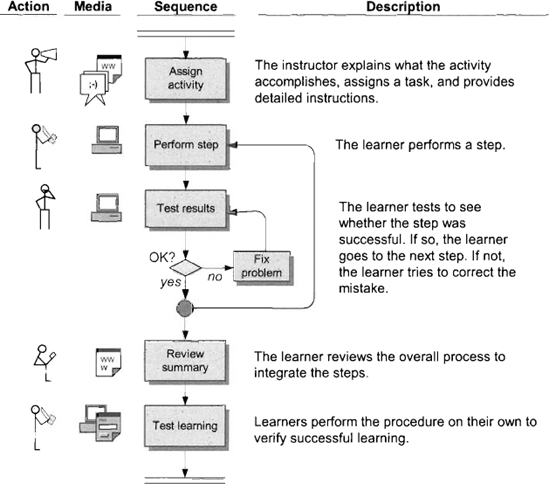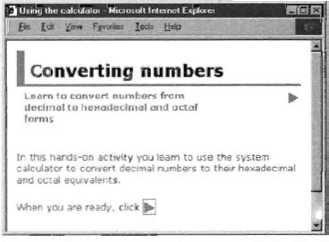6.14. Hands-on activity
Hands-on activities give learners real work to perform. In a hands-on activity the learner completes a task outside the lesson, such as performing a calculation with an on-screen calculator, designing something on paper, or operating a piece of machinery. The hands-on activity guides learners through the real-life task, provides feedback on their success, and may test what they learned.
6.14.1. When to use hands-on activities
Use hands-on activities to teach hands-on tasks. Hands-on activities give learners a chance to practice what they are learning. They are powerful stimuli for learning practical skills.
Hands-on activities, though not especially effective in teaching abstract knowledge, can provide a pleasant descent from the stratospheric heights of conceptual thought common in such courses.
6.14.2. How hands-on activities work
The instructor assigns a task and gives detailed instructions. The learner performs the procedure, checking each step as performed. After a review of the procedure, the learner repeatedly performs the task on his or her own.

6.14.3. Example of a hands-on activity
The following example teaches use of the Windows system calculator to convert decimal numbers to their hexadecimal and octal equivalents.

The activity begins with ...
Get Designing Web-Based Training: How to Teach Anyone Anything Anywhere Anytime now with the O’Reilly learning platform.
O’Reilly members experience books, live events, courses curated by job role, and more from O’Reilly and nearly 200 top publishers.

